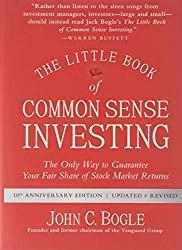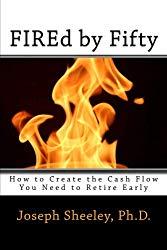Today we have a guest post from Baruch Silvermann, founder of The Smart Investor.
Everybody has probably fantasized about buying everything and anything they wanted without having to worry about where to get the money to pay for them. But soon, reality shocks you to realize that you don’t have an unlimited source of income. And spending left and right is the expressway to become penniless. When you operate your household without a budget, it would just be a matter of time before you run out of money for rent, lights and/or for your creditors.
(Note, this site contains affiliate links. As an Amazon Associate I earn from qualifying purchases. When you click on an affiliate link and buy something, The Small Investor will get a small commission for the referral. You are charged nothing extra for the purchase. This helps keep The Small Investor going and free. I don’t recommend any products I do not fully support. If you would like to help but don’t see anything you need, feel free to visit Amazon through this link and buy whatever you wish. The Small Investor will get a small commission when you do, again at no cost to you.)
The 50-30-20 budget disciplines you to use only as much of your money you have allocated on each category of your budget. This would depend on how much money you bring home every month. There’s nothing complicated about it. You get to spend 50% of your take-home pay on your needs, 30% on your wants, and 20% on savings/debts. Let’s look at that a little closer.

What Is the 50/30/20 Budget?
The “50/30/20 rule” for saving and spending was the brainchild of Harvard bankruptcy expert Elizabeth Warren which she developed with her daughter. This simple method breaks down your budget into three simple chunks: needs, wants and debt/savings.
The first step is to calculate your monthly take-home pay which is your salary minus taxes. If your employer immediately deducts your contributions for a health insurance plan or retirement plan, add them back in. Now that you know your monthly pay, let’s spread them out according to the budget.
If you enjoy The Small Investor and want to support the cause, or you just want to learn how to become financially independent, please consider picking up a copy of my new book, FIREd by Fifty: How to Create the Cash Flow You Need to Retire Early This is the instruction manual on how to become financially independent.
Take note that this method works well if you bring home the same amount of money (or thereabouts) every pay period. If your income is variable from month to month, you could employ a more suitable budgeting method for your situation.
How do you use the 50/30/20 rule budget?
What you want to do is find out how much in specific sums you can allocate to your needs, wants, and savings or debts. This is after what’s left of your income when your employer deducts your income tax.
Your after-tax income is, therefore, an amount that is net of whatever taxes you need to pay such as state tax, local tax, income tax, Medicare and Social Security. If you’re a fixed-income earner and you have a regular paycheck, it will be easy to measure your after-tax income. Simply take a look at your pay stubs. If your employer took out your contributions to health care, retirement plan, and any other contributions, add them back to your computation.
For self-employed individuals, your after-tax income equals your gross income minus your business expenses. These would include the cost of office supplies or your plane ticket to conferences plus the amount you set aside for taxes. Remember that you should be the one to remit your own quarterly estimated tax payments to the government since you don’t have an employer to do that for you.
Be careful to include all the money that has gone in or out of your accounts for the past 12 months at least. Look at all your bank accounts. You want to monitor every cent that went in or out of your accounts. All the cash payment and every currency exchange during your travel. You want to account for every cent of bank taxes, ATM fees, tips you gave the waiter in the restaurant, and even the money old granny gave you for your birthday.

FIREd by Fifty: How to Create the Cash Flow You Need to Retire Early
Set 50% of your net pay for needs
Compute half of your monthly pay. This is the amount of money that you will set aside for your needs. What are the needs? These are things that are essential for your survival. Examples of expenses that would go under this classification are housing, utilities, health insurance, groceries, transportation, and prescriptions. You may include some debts as needs such as credit card payments or car payments. This is because when you don’t pay them, your credit score will go down. Some people would have alimony and child support as part of their needs. Why? Because if they miss paying this, they would be in trouble – that is why it is a need.
However, this is not a complete list. If you have trouble differentiating a need from a want, ask yourself what will happen if you take it away? Health insurance, for example, falls under need because if you skip coverage, you’ll have to pay a fine. Of course, it’s necessary for your physical well-being. Other items are trickier, such as a cellphone. For the likes of them, you have to spend more time deliberating. Sometimes, a thing could be a need. But if you don’t want to settle for a basic model (which works for you) but something far more expensive, fancier and trendier, it’s more of a want.
Minimize your wants to 30%
Concerning needs, wants are the other things that you spend money on that are not essential for your existence. Examples of this would be dinner and movies out, a new signature bag, concert and NBA games tickets, lavish vacations, top-of-the-line cellphone, and Netflix subscription. In short, they are the little spices you spend your hard-earned cash on to make your life a little more comfortable, enjoyable and entertaining.
If you’ve had all these things in your life, it could be difficult to wean yourself away from them. It’s normal to adapt to (and enjoy) some luxuries even once in a while but remember that anything above the basics is a luxury. The other difficult part is when you want to cut down on your needs, self-justification can come in the way of a good budget. You might convince yourself that you’ve earned a steak dinner now and then to reward your hard work. That’s okay, as long as you keep things in control and don’t go overboard.
Allocate 20% of your budget for savings and debt payments
The last component goes to debt and savings. Just multiply your take-home pay by 0.20 to get 20%. For instance, if your take-home pay is $3,000 a month, you should set aside $600 for debt and savings ($3,000 x 0.20). Savings are items such as retirement accounts, emergency funds and other financial goals that you have set. Use a free online savings calculator to see how your money will grow over time.
For the debt part, include items such as student loans or other debt you want to put some more money to pay off. Remember that in your “needs” category, you may have included some must-pay debts (such as your credit card). Well, this one accounts for extra payments you can make once you’ve taken care of the retirement or health savings account funds.

Want all the details on using Investing to grow financially Independent? Try The SmallIvy Book of Investing.
Is the 50/30/20 rule budget good for you?
For some people, the 50/30/20 rule could be what they are looking for as a budgeting method. But if you ask if it fits you to a T, it would depend on your specific personal circumstances.
With just three categories to track, it could give you more focus and not drive yourself crazy categorizing each individual item on your finances. But for others, the lack of structure does not afford too much flexibility in improving their spending habits. In the end, you will have to determine whether a less detailed or highly detailed system would suit you best.
Another potential shortcoming of this method is the percentage breakdown of money for needs, wants, and savings/debts. For some levels of income and some locations, 50% of the take-home pay would not be enough to cover all their needs.
A good case would be for people who live in areas with a high cost of living. They might need to put a lot of money to pay for housing and make it impossible to keep their needs under or within the 50% ceiling.
Lastly, it also has a fault for higher-income earners because the 50/30/20 rule disproportionately puts too much money on wants versus savings and debts or wants.
Baruch Silvermann is a personal finance expert, investor for more than 15 years, digital marketer and founder of The Smart Investor. But above all, he is passionate about teaching people how to manage their money and helping millions on their journey to a better financial future.
Have a burning investing question you’d like answered? Please send to [email protected] or leave in a comment.
Follow on Twitter to get news about new articles. @SmallIvy_SI
Disclaimer: This blog is not meant to give financial planning or tax advice. It gives general information on investment strategy, picking stocks, and generally managing money to build wealth. It is not a solicitation to buy or sell stocks or any security. Financial planning advice should be sought from a certified financial planner, which the author is not. Tax advice should be sought from a CPA. All investments involve risk and the reader as urged to consider risks carefully and seek the advice of experts if needed before investing.
